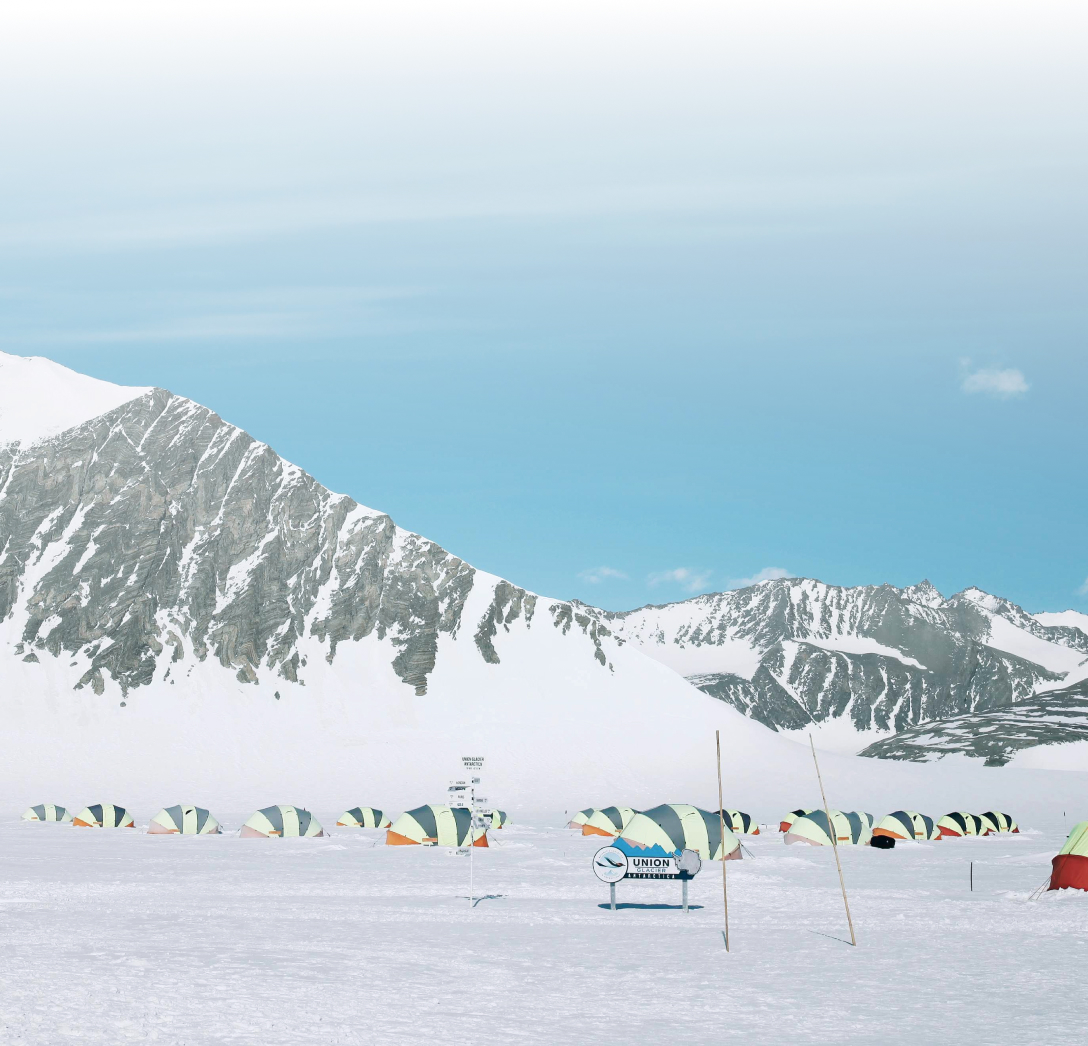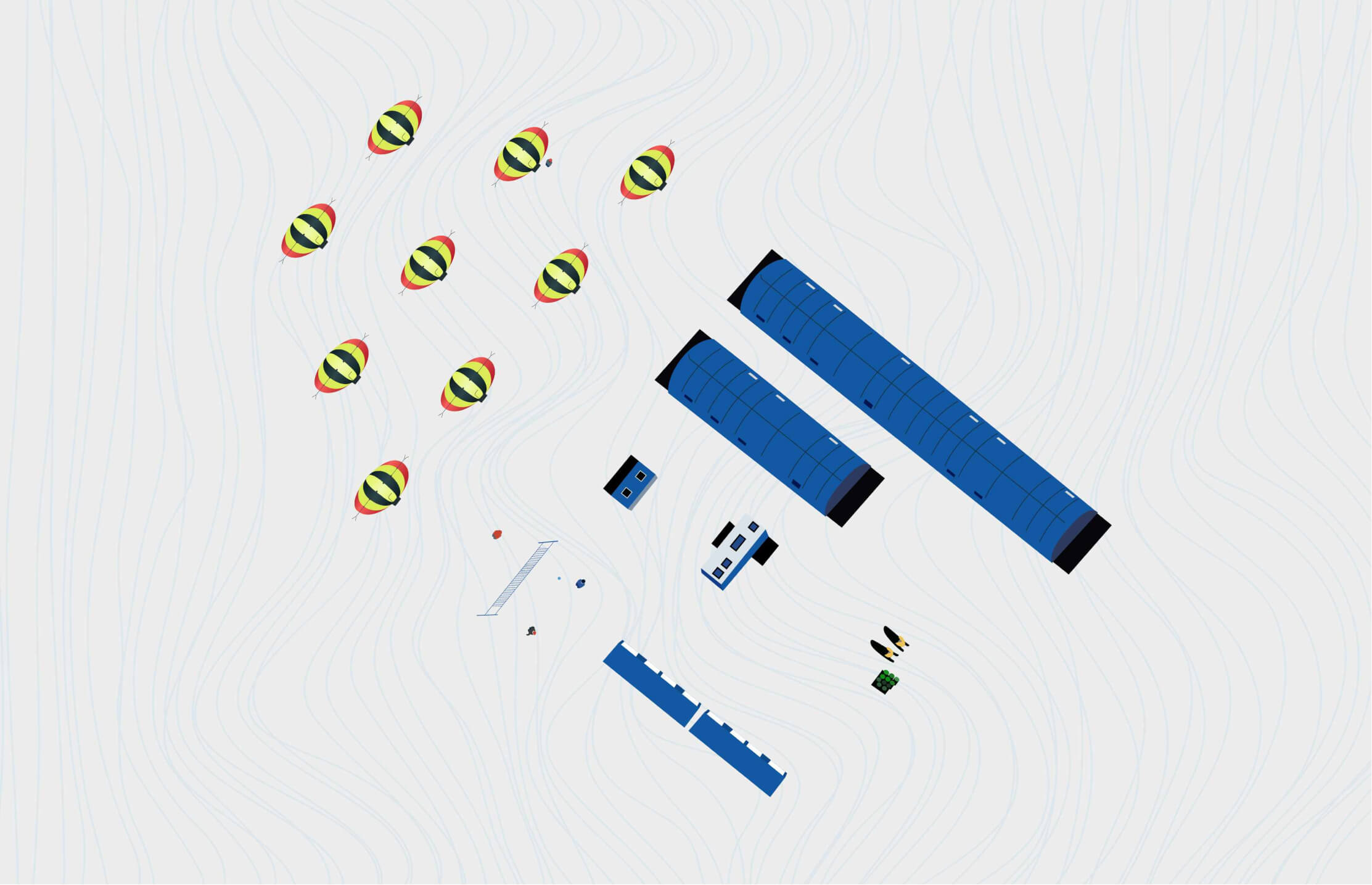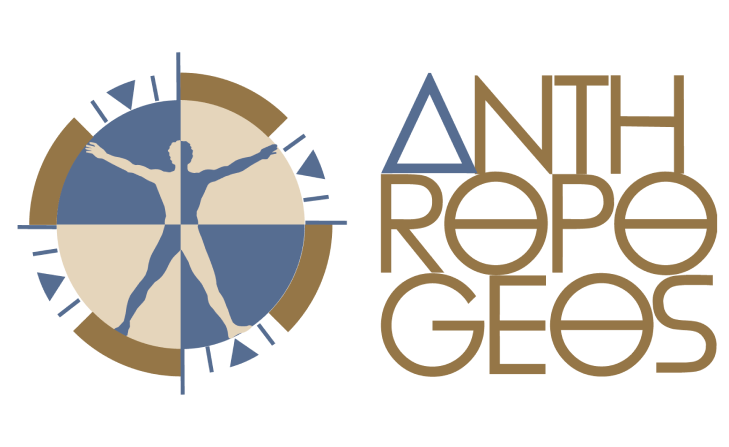

UNION GLACIER
79°46′05″S 83°15′42″W
Coordinates
700 meters
Height above sea level
THE AIRPORT
THE AIRPORT
THE ANTHROPOGEOS TEAM ARRIVED AT THE AIRPORT ON THE UNION GLACIER, WHERE OUR GUIDES, ICELANDERS EIÐUR AND HLYNUR, MET US.
THE ANTHROPOGEOS TEAM ARRIVED AT THE AIRPORT ON THE UNION GLACIER, WHERE OUR GUIDES, ICELANDERS EIÐUR AND HLYNUR, MET US.
Mechanical drivers Eiður and Hlinur.


Mechanical drivers Eiður and Hlinur.
The plane lands here on blue ice, a unique stretch of land from which all the snow is blown away by the wind, keeping the surface perfectly smooth and allowing aircraft with wheeled landing gears to land. This natural runway is located 8 km from the camp.
The plane lands here on blue ice, a unique stretch of land from which all the snow is blown away by the wind, keeping the surface perfectly smooth and allowing aircraft with wheeled landing gears to land. This natural runway is located 8 km from the camp.

IL-76 on the runway at the Union Glacier.
IL-76 on the runway at the Union Glacier.
THE ALE CAMP
THE ALE CAMP
THE ALE (ANTARCTIC LOGISTICS AND EXPEDITIONS) CAMP IS LOCATED ON THE UNION GLACIER
THE ALE (ANTARCTIC LOGISTICS AND EXPEDITIONS) CAMP IS LOCATED ON THE UNION GLACIER
and is the main access point to Antarctica for people travelling by plane from Chile. The flight here takes just over four hours. This camp serves as base camp and is the largest of all the permanent ALE bases. It’s a fully-fledged tourist center with hot food, a library, and comfortable tents with beds. The camp has showers, toilets, and even a gift shop.
and is the main access point to Antarctica for people travelling by plane from Chile. The flight here takes just over four hours. This camp serves as base camp and is the largest of all the permanent ALE bases. It’s a fully-fledged tourist center with hot food, a library, and comfortable tents with beds. The camp has showers, toilets, and even a gift shop.

The blue tents are the communal areas
The colored tents are the ‘hotel’
Aerial view of the ALE camp on the Union Glacier. The blue tents are the communal areas, and the colored tents are the ‘hotel’.
Aerial view of the ALE camp on the Union Glacier. The blue tents are the communal areas, and the colored tents are the ‘hotel’.
Most of the company's employees work in two camps at once, and periodically move from one to the other. The working season lasts only three months during the Antarctic summer from November to the end of January.
The Union Glacier Camp provides support to all tour operators working in West Antarctica, and also liaises with expedition teams until they reach the South Pole. Guides are required to report on the state of affairs during the trip at strictly regulated intervals. If this does not happen within 24 hours, a rescue team is sent from the camp to the place of the last communication. After the South Pole, the connection is maintained by ALCI from Novolazarevskaya station.
The Union Glacier Camp provides support to all tour operators working in West Antarctica, and also liaises with expedition teams until they reach the South Pole. Guides are required to report on the state of affairs during the trip at strictly regulated intervals. If this does not happen within 24 hours, a rescue team is sent from the camp to the place of the last communication. After the South Pole, the connection is maintained by ALCI from Novolazarevskaya station.
Most of the company's employees work in two camps at once, and periodically move from one to the other. The working season lasts only three months during the Antarctic summer from November to the end of January.
The Union Glacier Camp provides support to all tour operators working in West Antarctica, and also liaises with expedition teams until they reach the South Pole. Guides are required to report on the state of affairs during the trip at strictly regulated intervals. If this does not happen within 24 hours, a rescue team is sent from the camp to the place of the last communication. After the South Pole, the connection is maintained by ALCI from Novolazarevskaya station.
The Union Glacier Camp provides support to all tour operators working in West Antarctica, and also liaises with expedition teams until they reach the South Pole. Guides are required to report on the state of affairs during the trip at strictly regulated intervals. If this does not happen within 24 hours, a rescue team is sent from the camp to the place of the last communication. After the South Pole, the connection is maintained by ALCI from Novolazarevskaya station.









The tents here are practically hotel rooms, albeit without amenities. They have beds (with sleeping bags, double mattresses, pillows and linens) and tables. The tents are made of a special nylon material adapted for Antarctica, which allows the air inside to warm up to 4-20 degrees during the polar day). The largest blue tent in the camp is the canteen. Here, one can get together with others to eat, play games, drink Chilean wines, and share stories.
The tents here are practically hotel rooms, albeit without amenities. They have beds (with sleeping bags, double mattresses, pillows and linens) and tables. The tents are made of a special nylon material adapted for Antarctica, which allows the air inside to warm up to 4-20 degrees during the polar day). The largest blue tent in the camp is the canteen. Here, one can get together with others to eat, play games, drink Chilean wines, and share stories.
For those who have come to Antarctica just for a couple of days to visit the South Pole from Chile, this is the place of departure and arrival, as well as entertainment such as cycling with big wheels or climbing the nearby mountain peaks.
For those who have come to Antarctica just for a couple of days to visit the South Pole from Chile, this is the place of departure and arrival, as well as entertainment such as cycling with big wheels or climbing the nearby mountain peaks.
FROM HERE OUR EXPEDITION BEGAN, WITH TWO ESCORTS FROM THE OTHER END OF THE EARTH—ICELAND.
FROM HERE OUR EXPEDITION BEGAN, WITH TWO ESCORTS FROM THE OTHER END OF THE EARTH—ICELAND.
Eiður and Hlynur are not only guides, mechanics and drivers, they are multifunctional workers for the summer season and deliver supplies, set up temporary depots with resources for kiters and skiers, and operate service vehicles. They try to combine all these tasks into one route, thought out carefully in terms of time and fuel consumption. For example, before our expedition, our guides went to the FD83 fuel depot to help with the cars, then made a separate expedition to leave fuel for a kiter. As he paid for part of this expedition, this worked out as a saving for all parties.
Eiður and Hlynur are not only guides, mechanics and drivers, they are multifunctional workers for the summer season and deliver supplies, set up temporary depots with resources for kiters and skiers, and operate service vehicles. They try to combine all these tasks into one route, thought out carefully in terms of time and fuel consumption. For example, before our expedition, our guides went to the FD83 fuel depot to help with the cars, then made a separate expedition to leave fuel for a kiter. As he paid for part of this expedition, this worked out as a saving for all parties.

“
Before driving on a new road, we carefully study satellite images, radar data, and observe how the snow is sliding down the mountains. Then we drive along the road and scan the area to find the best path between the cracks, which is quite difficult to work out, because, in many places, cars can easily get through, but heavily loaded sleds no longer can. Even a person can’t get through. But we also drive very slowly, at a speed of 6-8 kilometers per hour, while keeping an eye on the scanner data. If you need to venture into this area, then it is imperative to tie yourself to the car with a safety rope, and only leave it if you have no other option.
Before driving on a new road, we carefully study satellite images, radar data, and observe how the snow is sliding down the mountains. Then we drive along the road and scan the area to find the best path between the cracks, which is quite difficult to work out, because, in many places, cars can easily get through, but heavily loaded sleds no longer can. Even a person can’t get through. But we also drive very slowly, at a speed of 6-8 kilometers per hour, while keeping an eye on the scanner data. If you need to venture into this area, then it is imperative to tie yourself to the car with a safety rope, and only leave it if you have no other option.


“
The most extreme situations happened to me not during tourist trips, but when we were providing support to workers who were setting up fuel depots in the mountains. This was during the time that White Desert was building its runway. Two polar explorers in the mountains lost one of their tents and almost lost contact with Novo. We had to come to their assistance quickly. The main problem was in the road—it was a new path, still poorly explored, and there were quite a few crevices.
The most extreme situations happened to me not during tourist trips, but when we were providing support to workers who were setting up fuel depots in the mountains. This was during the time that White Desert was building its runway. Two polar explorers in the mountains lost one of their tents and almost lost contact with Novo. We had to come to their assistance quickly. The main problem was in the road—it was a new path, still poorly explored, and there were quite a few crevices.


“
When I’m on a trip, I have almost no free time. Sometimes, I manage to read a couple of books, but mostly I am busy preparing the trip, making sure everything is in order while we’re on the way, planning out the next day, and making notes in the diary of the day's events. It takes up all my time.
When I’m on a trip, I have almost no free time. Sometimes, I manage to read a couple of books, but mostly I am busy preparing the trip, making sure everything is in order while we’re on the way, planning out the next day, and making notes in the diary of the day's events. It takes up all my time.


“
We usually arrive in Antarctica on the first flight and leave on one of the last. Since even just getting a person here is very expensive, each team member does as much work as possible. I don’t even notice how time flies by here—for the last 3 months I have hardly had any breaks. Between trips, there is always preparation required for things like packing; collecting spare parts, tools, and equipment; and checking vehicles over. By the beginning of the expedition, everything should be in order. It’s much easier to fix any issues on base where there is a garage and tools, than to try and fix them in the middle of a white desert at -40 °C. Also, if we understand that something is missing, we have to order it in from the continent. This can be very expensive and takes a lot of time—at least two weeks. So the main thing is to be organized.
We usually arrive in Antarctica on the first flight and leave on one of the last. Since even just getting a person here is very expensive, each team member does as much work as possible. I don’t even notice how time flies by here—for the last 3 months I have hardly had any breaks. Between trips, there is always preparation required for things like packing; collecting spare parts, tools, and equipment; and checking vehicles over. By the beginning of the expedition, everything should be in order. It’s much easier to fix any issues on base where there is a garage and tools, than to try and fix them in the middle of a white desert at -40 °C. Also, if we understand that something is missing, we have to order it in from the continent. This can be very expensive and takes a lot of time—at least two weeks. So the main thing is to be organized.


“
On the Union Glacier, we have a small camp with tents, where all the tools for the machines are kept. At some point, this camp, of course, looks more like a garage sale, as we have not yet put everything in order. We eat in the communal ALE tent with everyone else. And in Novolazarevskaya we stay in a camp in mobile containers.
On the Union Glacier, we have a small camp with tents, where all the tools for the machines are kept. At some point, this camp, of course, looks more like a garage sale, as we have not yet put everything in order. We eat in the communal ALE tent with everyone else. And in Novolazarevskaya we stay in a camp in mobile containers.


“
Another of our tasks is maintaining the Arctic Trucks machines which are at the disposal of scientific expeditions and other companies. They usually require quite a lot of attention, since no one checks them during the winter months.
During my trips, we had very few extreme situations. Once our cooling system broke down on a plateau—the liquid leaked out and we overheated the engine. That time, there were three cars and six people on the expedition, and we, in the end, just abandoned the broken car, falling short of our destination by 750 km. We returned after 3 weeks to tow the car for the remaining 750 km. I remember this road. You’re driving, the engine is not working, there is fog around because there is no heating, and there is silence. And it lasted for three days.
During my trips, we had very few extreme situations. Once our cooling system broke down on a plateau—the liquid leaked out and we overheated the engine. That time, there were three cars and six people on the expedition, and we, in the end, just abandoned the broken car, falling short of our destination by 750 km. We returned after 3 weeks to tow the car for the remaining 750 km. I remember this road. You’re driving, the engine is not working, there is fog around because there is no heating, and there is silence. And it lasted for three days.
Another of our tasks is maintaining the Arctic Trucks machines which are at the disposal of scientific expeditions and other companies. They usually require quite a lot of attention, since no one checks them during the winter months.
During my trips, we had very few extreme situations. Once our cooling system broke down on a plateau—the liquid leaked out and we overheated the engine. That time, there were three cars and six people on the expedition, and we, in the end, just abandoned the broken car, falling short of our destination by 750 km. We returned after 3 weeks to tow the car for the remaining 750 km. I remember this road. You’re driving, the engine is not working, there is fog around because there is no heating, and there is silence. And it lasted for three days.
During my trips, we had very few extreme situations. Once our cooling system broke down on a plateau—the liquid leaked out and we overheated the engine. That time, there were three cars and six people on the expedition, and we, in the end, just abandoned the broken car, falling short of our destination by 750 km. We returned after 3 weeks to tow the car for the remaining 750 km. I remember this road. You’re driving, the engine is not working, there is fog around because there is no heating, and there is silence. And it lasted for three days.

Previous chapter
II PREPARING FOR A TRIP
continue reading ➔
IV STOP-OVER AIRPORT
continue reading ➔
IV STOP-OVER AIRPORT
Previous chapter
II PREPARING FOR A TRIP
©
Anthropogeos. 2021
Contacts
Our social channels










